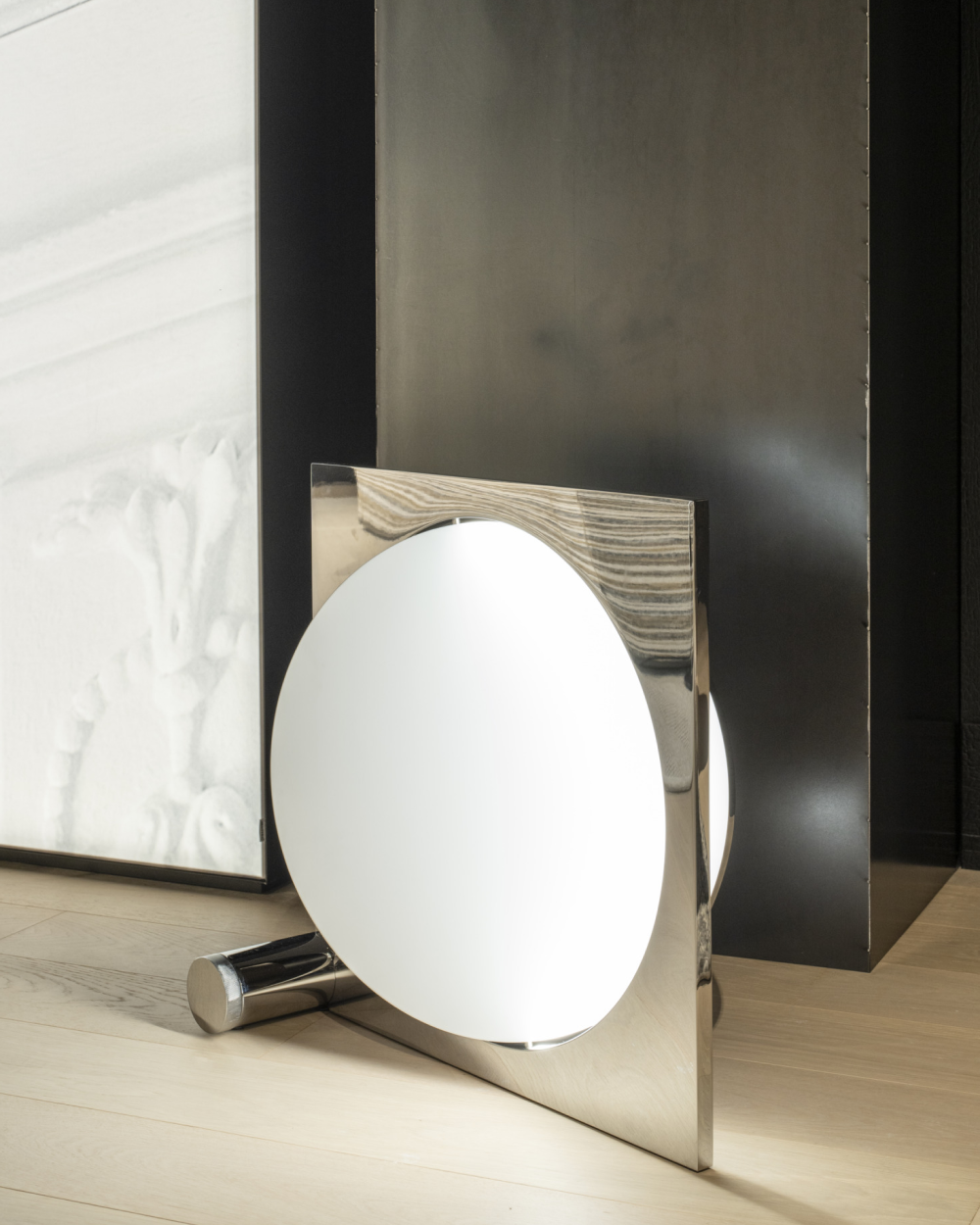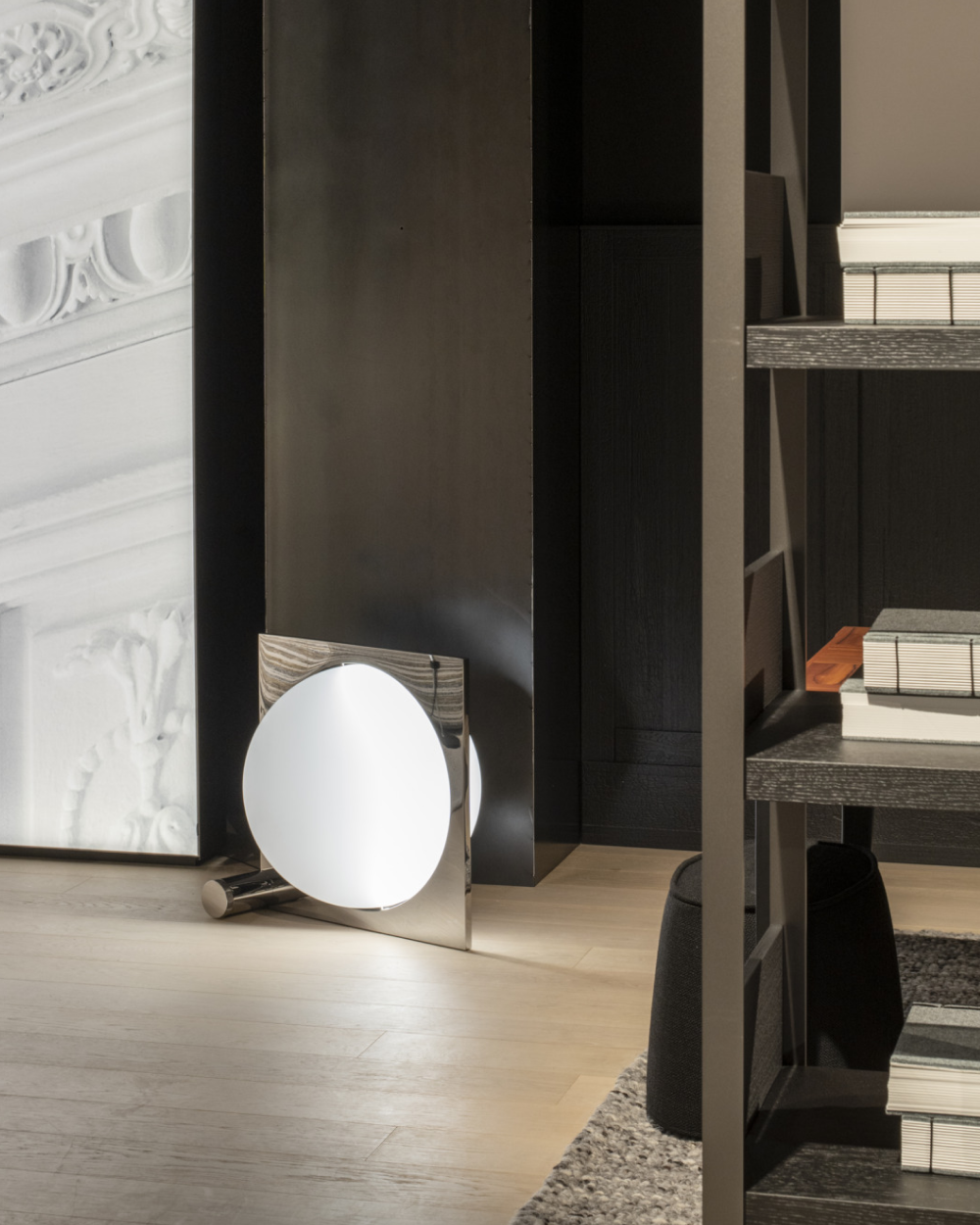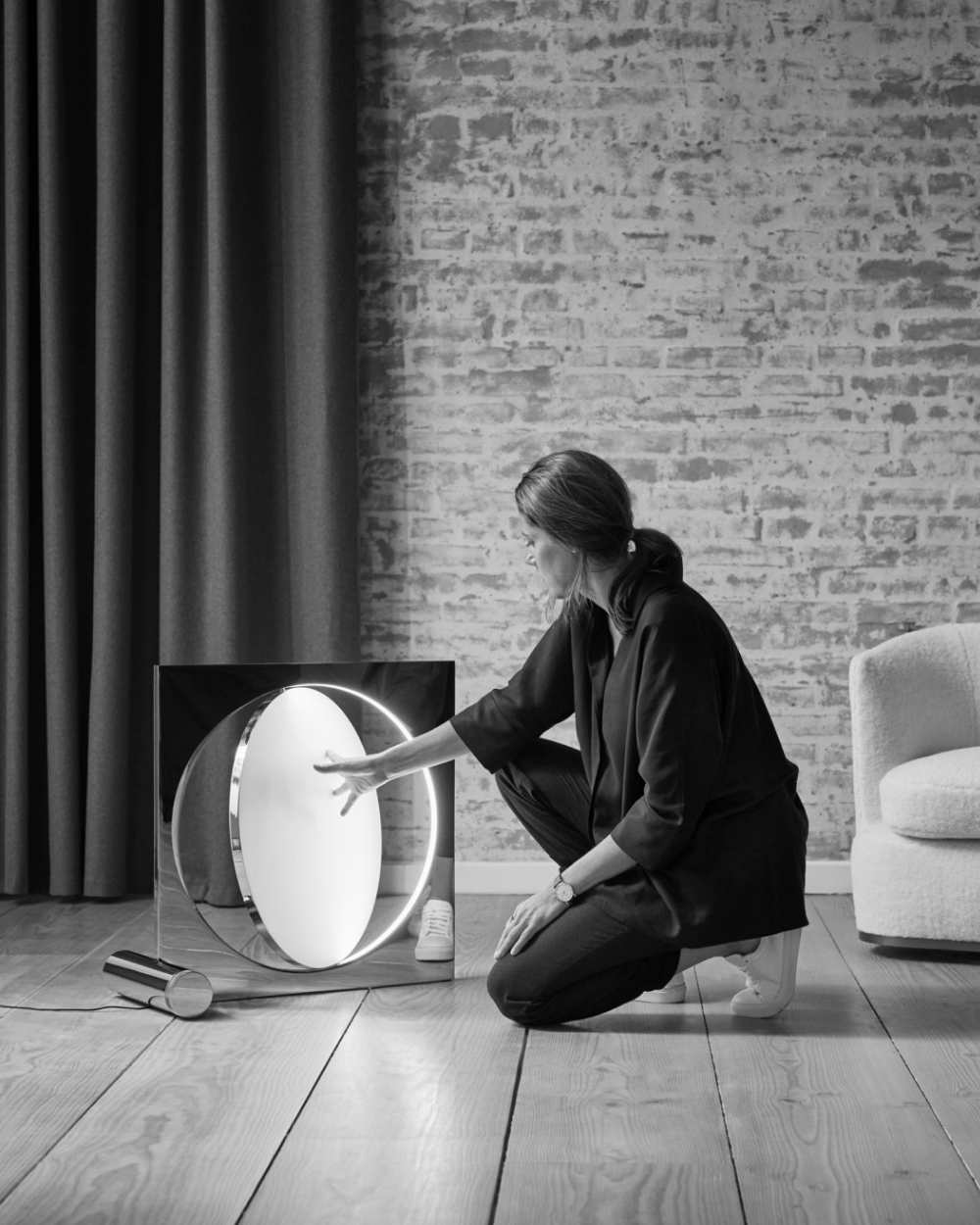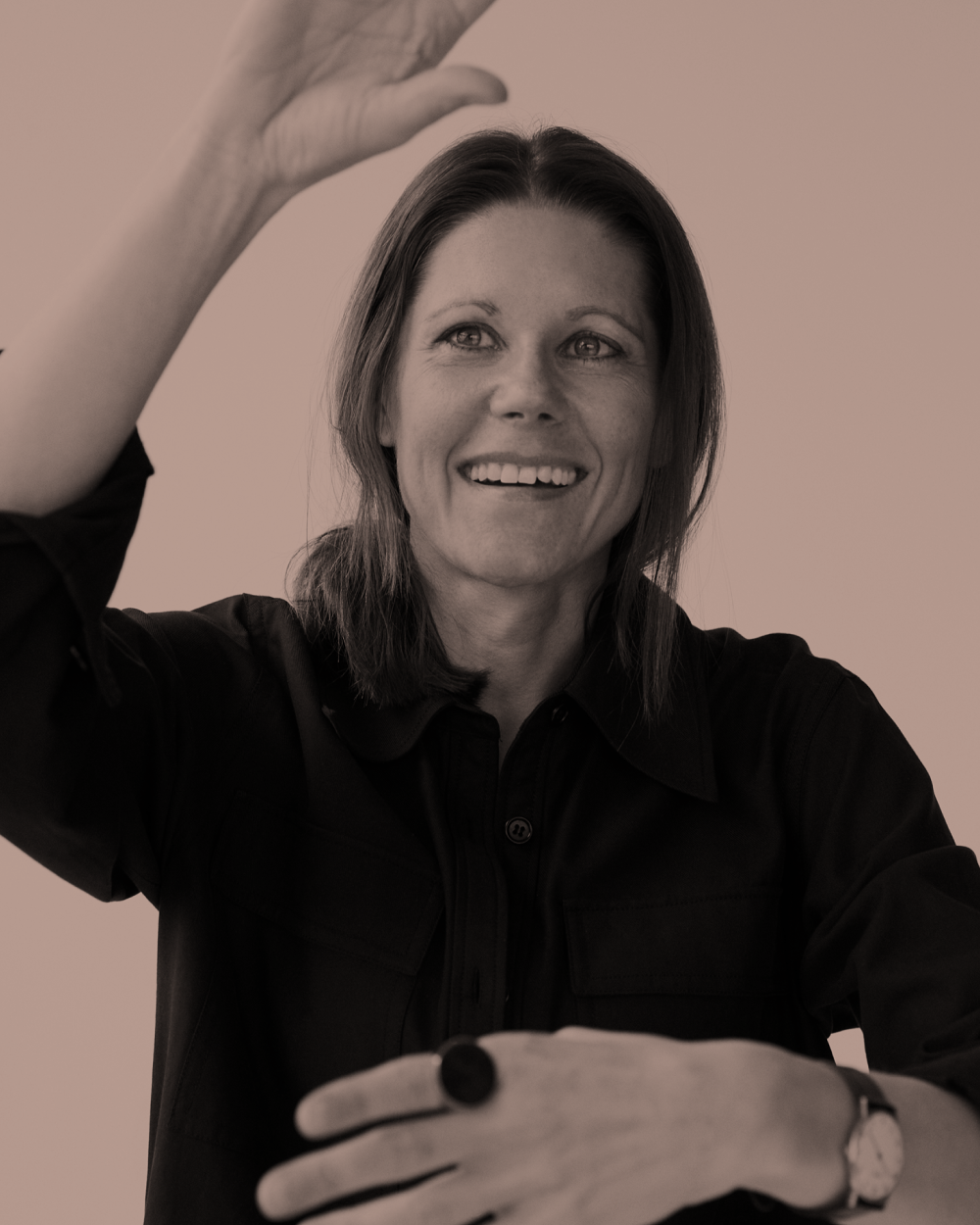Anne Boysen won the competition with her floor lamp. And in the days that followed the initial broadcast of the programme, she received roughly 2000 emails from people all around Denmark, wanting to buy the lamp, and no less than nine different manufacturers reached out, offering to help her put the lamp into production. Since introducing Moonsetter in collaboration with Louis Poulsen, it has made it to the cover of Wallpaper and won a number of prestigious awards.
100 % Anne Boysen
The brief to design a lamp that could create space within space came at a point in the competition where Anne Boysen was doing well. So she decided to give herself a break.
“At that point I had won two out of three assignments and I knew I could afford to experiment a little. So I chose to do something, which was 100% me and to forget about the competition for a moment. I just wanted to make a lamp that I also wanted for myself. That was the starting point.“
A lamp to be experienced
Today, there is a Moonsetter in Anne Boysen’s living room, below her studio, which is situated on the first floor of a gorgeous Funkis villa, where she lives with her family in Køge, outside Copenhagen. It seems big. She laughs and says it is.
“The Moonsetter was always meant to be big. It needs a certain volume in order for you to sense it with your whole body. That’s the idea, to understand how you sense light. So, I made it big enough for you to use both your arms and legs, so you somehow take it in with all of your body.”
She demonstrates how the white side of the disc softly diffuses the LED light, which is submerged in the frame, and when rotating the disc around its own axis, how the mirror polished aluminium side of the disc reflects the light. And also, how you can regulate the light with your foot on a switch that acts as a dimmer as well.
“The cool thing about it, I think, is that you always experience the lamp differently. Adjustable lamps are often kept in a stationary position. But, what I hear from people about this lamp is that they keep moving it around, playing with it. At our place, we rotate it a bit every day. And, depending on where it’s placed and from where you view it, it reflects different parts of the room and in a way becomes an object, while also merging with the room.”
"I believe that all the love and all the attention I put into my designs, I pass on to other people.”
Simply does it
Looking at Moonsetter, it doesn’t appear to be the type of lamp that could be created in a couple of days. However, this is almost exactly what happened. The TV competition had strict deadlines, so Anne Boysen knew that she had to have something ready to show her team of smiths on the Monday, after having received the brief late Thursday evening.
So, as she does every time she starts a new assignment, Anne Boysen sent her family off to the countryside for a few days, so she could have the house to herself in order to focus on the brief at hand. On the Friday night, the moon was full and Anne Boysen was sitting at her desk behind closed blackout curtains, trying to crack the assignment, when she suddenly saw it.
“There was a small crack between the curtains where the moonlight came in - and then a ray of light fell on my desk, where a mirror was placed, which I had used to make a sofa from. And I looked at the mirror, which reflected the moonlight. So, I rotated it and played with it, thinking of how powerful the rays of light were. “
Anne Boysen began taking materials out of the rubbish bin and started to see what happened when she put a white piece of cardboard and other materials in front of the light, mesmerised by how much the ambience and the light changed depending on the materials used. Before long, the concept for the Moonsetter became clear.
Blown away
She recalls making a mock-up to show her light engineer and team of smiths. And even though it was ugly, as she says, it did the job. Everyone was completely taken with the idea, the depth and the simplicity of the lamp model.
“I knew then that I was on to something. An eye-catcher, which made people want to interact and go into depth with. The light engineer, the smiths and I all knew that this was something I should make. And then it just took off. I think, out of all of my products, the idea for this one came to me the fastest. And it has also been the easiest for me to bring to life. “
Like a piece of art
The sculptural aspect of the Moonsetter is no coincidence either, as Anne Boysen has attended several art schools, where she has worked extensively with sculptures and how to create changeable experiences, when moving around them.
“When I received the brief, I was keen to create something that I would want in my own living room. I don’t have my other pieces in my own living room, so this needed to be something that I wanted to look at every day. And in order to make that happen, it had to be clear, simple and yet expressive. Like a piece of art, like a sculpture you want to look at all the time.”
Looking back at all her designs over the years, Anne Boysen always invites the users to play. She wants them to have an experience, to become part of the design and to understand the slight differences that she tries to communicate. For her own part, it is very much about being allowed to go into depth with her designs and do things properly.
Making an effort
Looking at society in general, Anne Boysen sees a tendency of us wanting more and more, and that so many new products just keep being introduced, of which many do not have a long lifespan. Therefore, it is important for her to do it differently. She would rather use more time on developing her designs in order for them to have depth, but also for them to have a raison d’être in 20 or 50 years time.
“I really try to make an effort. And I think hard about what I want to pass on, because after all, we have enough chairs and we also have enough lamps, but if I have to do something, it must be because I can contribute with something, a pause, or something not seen before.”



